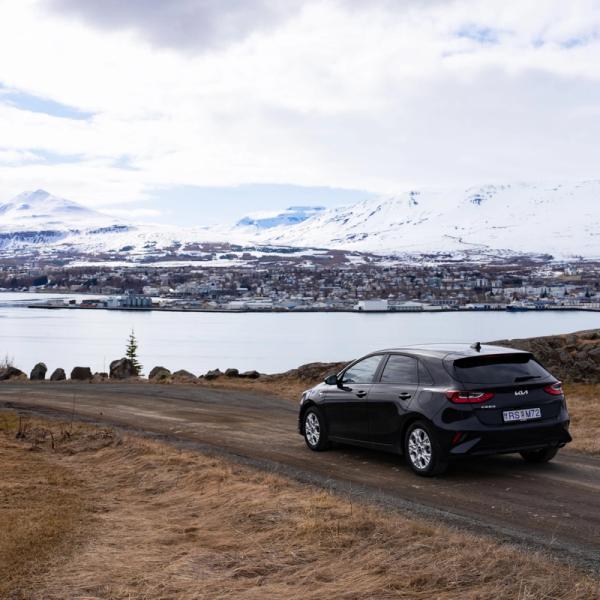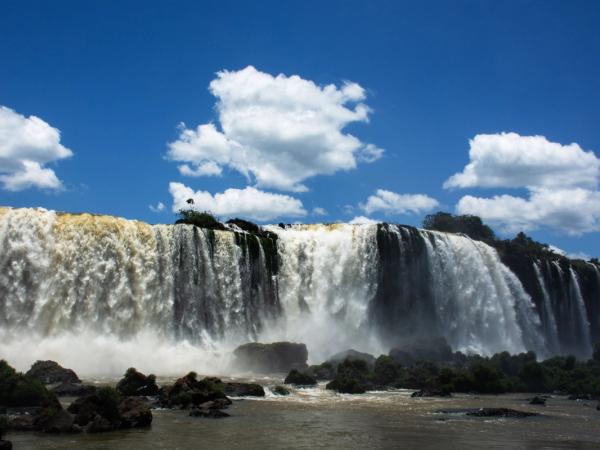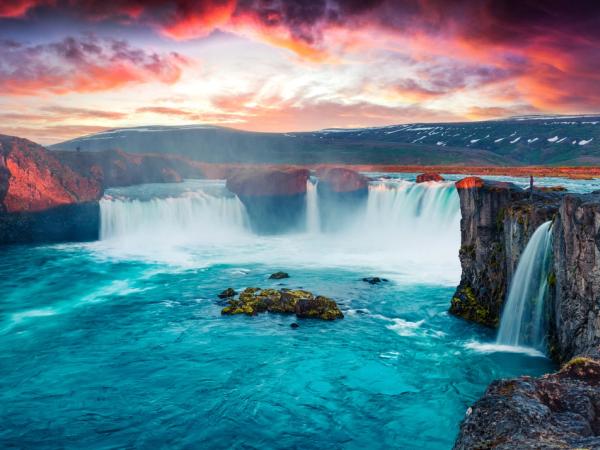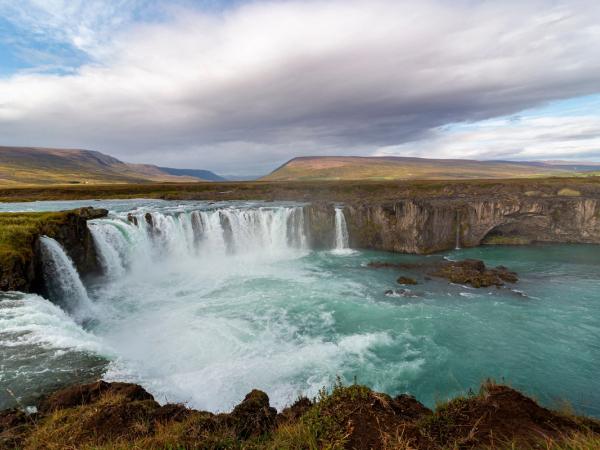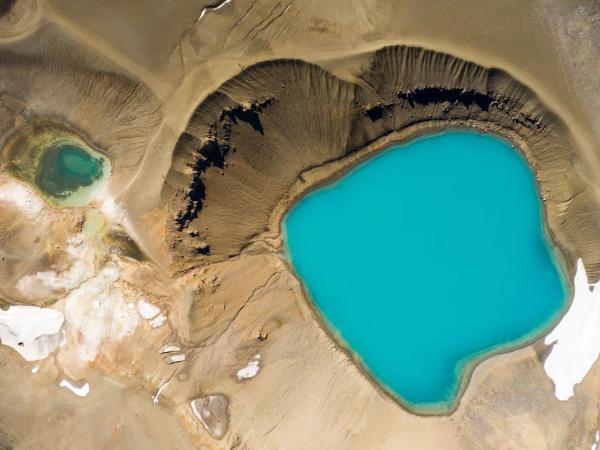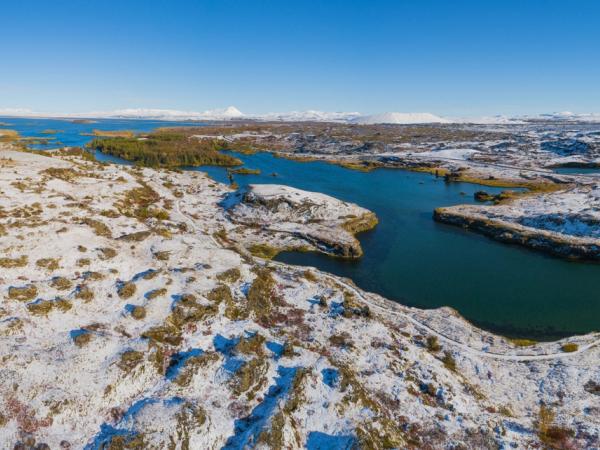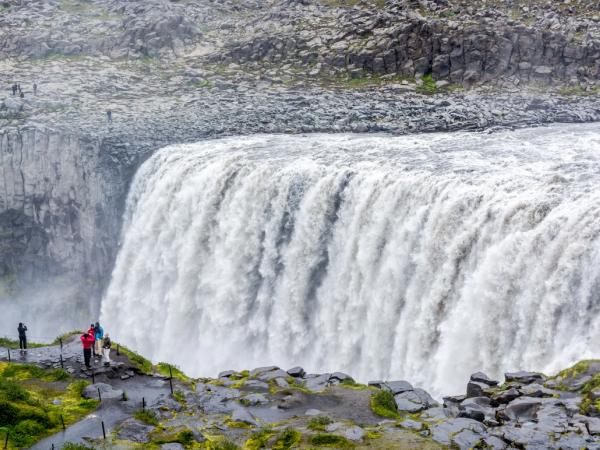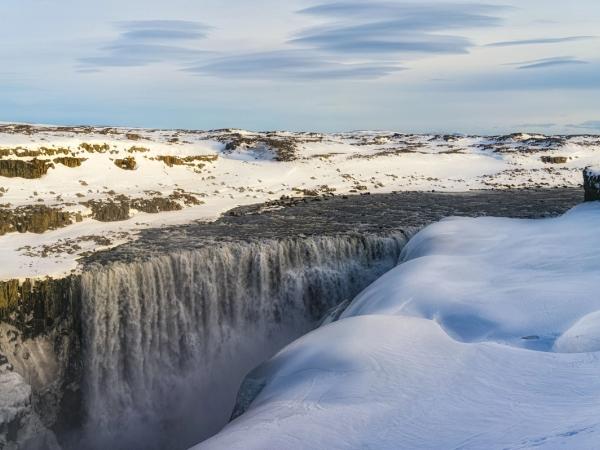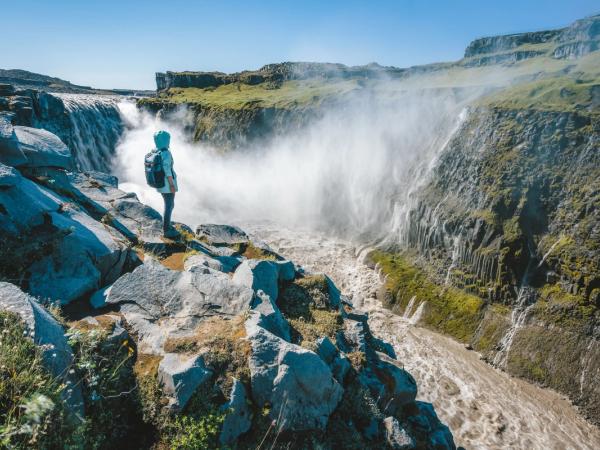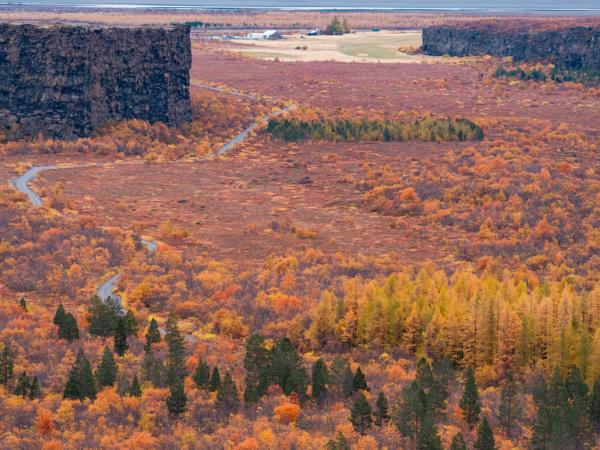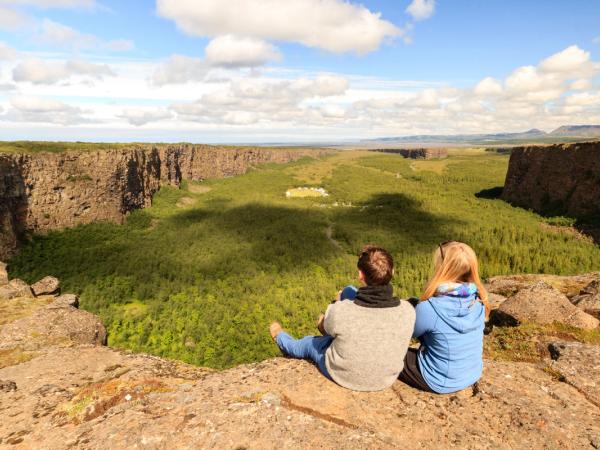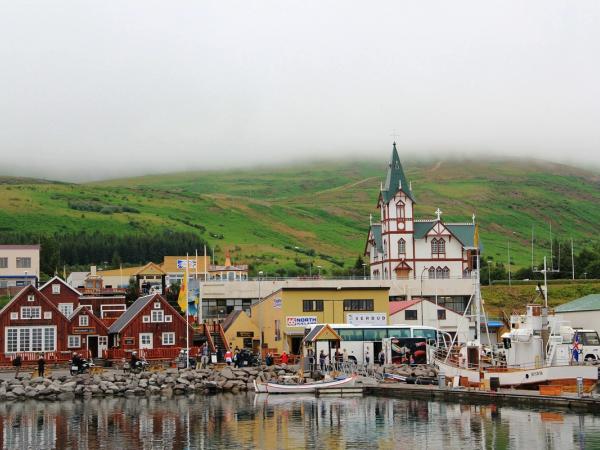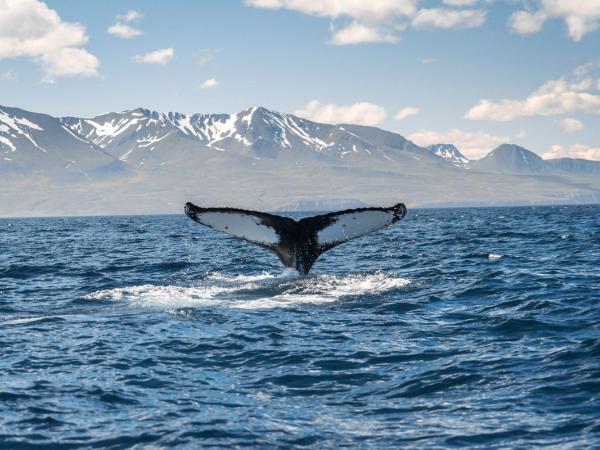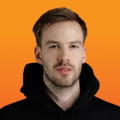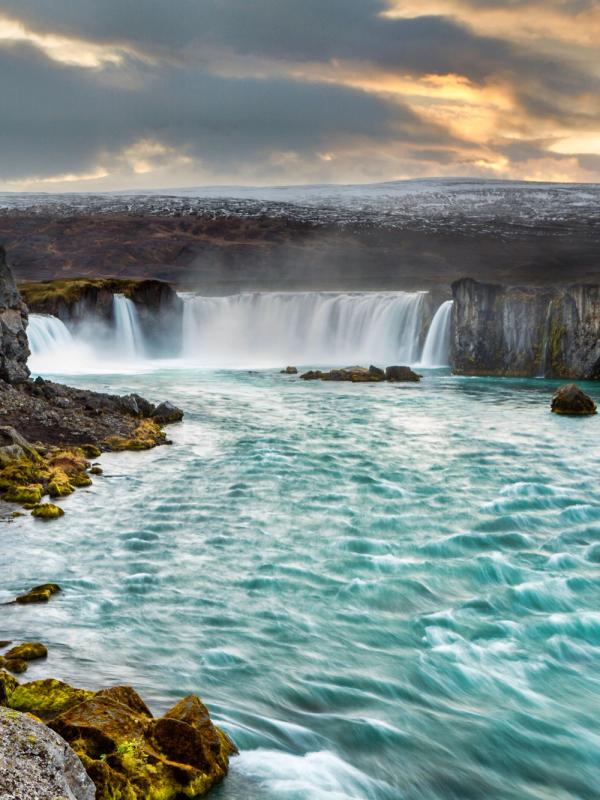
The Best of the North: Exploring Iceland’s Diamond Circle
In Iceland, we often find there’s not enough time to see everything we want because the country is full of amazing attractions. And, especially if it’s your first time visiting, you may have a hard time deciding what to do and when. But don’t worry, because we are here to help you make the most of your trip.
North Iceland is one of the regions that should be on your list. There's a lot to do here, and all of it is worth it. And there’s a very famous route in the country that will take you to some of the best this part of Iceland has to offer: The Diamond Circle. This looping route is a fantastic way to explore this region.
In this guide, we'll cover everything you need to know about driving the Diamond Circle, from the must-see sights to travel tips that will make your journey unforgettable.
Key Takeaways
- The Diamond Route is 250 kilometers (150 miles) long, and it’s paved.
- The main stops are Húsavík, Goðafoss waterfall, Ásbyrgi Canyon, Dettifoss waterfall, and Lake Mývatn.
- The Diamond Ring is made up of three roads: Route 1, Route 85, and Route 862.
- It can be covered in one day, but you’ll need two or three days to see everything properly.
- The north region of Iceland is a great spot to see the Northern Lights, which occur mainly between September and April.
What to Expect from the Diamond Circle
There are two main scenic routes in Iceland that connect some of the country's most breathtaking natural wonders. The best-known is the Golden Circle, located in the southwest of the country, close to Reykjavik, the capital. The other one is our protagonist today: The Diamond Circle.
Unlike its southern counterpart, the Diamond Circle is a more remote and wild adventure. The loop goes by five main attractions: Goðafoss Waterfall, Lake Mývatn, Dettifoss Waterfall, Ásbyrgi Canyon, and the charming town of Húsavík. But there are many other things nearby that can be included during your trip, especially if you are going to spend several days in the region. Each of these spots offers something unique, from powerful waterfalls and geothermal landscapes to rich wildlife and Viking history.
How long is the Diamond Circle & How to Best Explore it?
The Diamond Circle route covers approximately 150 miles (around 250 kilometers), and the roads are all in good condition. The route generally starts and ends in the town of Akureyri since it’s the best-connected city along the route and also has more accommodation options. However, you can start and finish wherever you like. In the end, it’s a circle.
The whole course is made up of three roads: Route 1, Route 85, and Route 862. Route 1 is also known as the Ring Road, the main road in Iceland. This road circles the entire country.
The best way to discover this fantastic circuit is by renting a car. This way, you can visit everything at your own pace. The route is mostly paved and well-maintained, making it accessible for most vehicles, but a 4x4 car is recommended for comfort and safety, especially if you plan to explore off the beaten path.
The weather can play an important role in your driving experience. Snow can be a problem in late autumn and winter. The authorities can close some roads due to snow or other adverse conditions. It’s important to always check the road status before setting out. If you are planning your trip for winter, make sure that your vehicle is equipped with winter tires.
What to see in the Diamond Circle
We previously mentioned the stops included in the Diamond Circle. Now, we’ll discuss them one by one.
Goðafoss Waterfall
Goðafoss is one of the most famous and historically meaningful waterfalls in Iceland. The name translates as ‘Waterfall of the Gods’.
Located just off the Ring Road, this spectacular cascade is about 12 meters high and 30 meters wide. As soon as you get there, you’ll be struck by the color of the water, a vivid turquoise hue. The waterfall is part of the Skjálfandafljót River.
One of the main features of Goðafoss is that it can be accessed on both sides of the river. The east side, closer to the parking area, offers a panoramic view of the falls. The west side provides a closer view and a trail that leads down to the riverbank.
The place also has an important historical significance, as it was here where, in the year 1000, lawspeaker and local chieftain Þorgeir Ljósvetningagoði decided to convert to Christianity.
The area surrounding Goðafoss is also highly recommendable, so take your time to explore the area.
Lake Mývatn
The next stop on our route is a volcanic lake surrounded by a quite diverse landscape. This area is known for its geothermal activity, and there are plenty of hot springs and volcanic craters. Lake Mývatn was formed around 2,300 years ago from a basaltic lava eruption.
One of the highlights of this astonishing place is the Mývatn Nature Baths. The water's color has earned this area the nickname of the "Blue Lagoon of the North” in comparison with the famous geothermal baths located in south Iceland. Here, you can relax in the warm, mineral-rich waters while enjoying fantastic views.
The area's geothermal activity is also responsible for creating some unique features, such as Hverir's steaming fumaroles and bubbling mud pots.
Another must-see is Dimmuborgir, a labyrinth of lava formations, caves, and tunnels. The name means “Dark Castles”.
If you're looking for good hiking experiences, head to Hverfjall, a volcanic crater. The trail to the top is relatively easy, and the views over the surrounding volcanic landscape are fantastic.
Dettifoss Waterfall
Almost every natural attraction in Iceland is a wonder that will leave you speechless. And all the spots in the Diamond Circle are just like that. But if we are talking about impressive sights, not many can compare with Dettifoss. It’s the second most powerful waterfall in Europe after the famous Rhine Falls in Switzerland, and it’s part of Vatnajökull National Park, one of the three national parks in Iceland.
Dettifoss is 45 meters high and 100 meters wide, and its raw power is a sight to behold. You can view it from both the east and west sides of the river, each offering unique perspectives and experiences.
Nearby, you can also visit Selfoss and Hafragilsfoss, smaller but equally captivating waterfalls located upstream and downstream, respectively. Selfoss, a bit upstream, with its semi-circular shape and gentle cascades, offers a serene counterpoint to Dettifoss's raw power. If you follow the path downstream, you’ll find Hafragilsfoss, a different view of the Jökulsárgljúfur canyon.
Ásbyrgi Canyon
We continue to the next stop: Ásbyrgi Canyon, a striking geological marvel. It’s a horseshoe-shaped canyon of about 3.5 kilometers (2.2 miles) in length and over 1 kilometer (0.6 miles) in width. It’s believed to have been formed by a catastrophic glacial flood that happened 10,000 years ago, and then a second flood about 3,000 years ago.
If you are into Norse mythology, you’re going to love this place. According to the legends, Ásbyrgi was created when Sleipnir, Odin’s eight-legged horse, struck the land here with its hoof.
The canyon can be divided into two parts. The lower level is a dense birch forest full of vegetation and a nice little pond, great for birdwatching. The other area is marked by cliffs that rise to 100 meters (330 feet), offering panoramic views of the canyon and surrounding areas. There are several hiking trails of different difficulty levels to explore the canyon.
Ásbyrgi is a great choice to have a picnic surrounded by stunning natural beauty.
Húsavík
We finally get to the fifth of the main stops of the Diamond Circle, the lovely town of Húsavík. This city is on the shores of Skjálfandi Bay and is the place to go for everything related to whales. In fact, it’s often called the “Whale Watching Capital of Iceland.”
Since whale watching is undoubtedly the main draw of Húsavík, there are many boat tours departing from the city. In them, you can see a variety of whale species, including humpback whales, minke whales, orcas, and sometimes even the elusive blue whale.
You can also learn more about these creatures in the Húsavík Whale Museum, which has an exhibition on the biology, ecology, and history of whales.
Whale-watching apart, the town is really charming, with beautiful houses and a relaxed atmosphere. The most representative building is Húsavíkurkirkja, a wooden church built in 1907. This city is also a great place to enjoy traditional Icelandic cuisine, and the seafood here is really fresh.
Close to the town is the Geosea Sea Baths, a geothermal pool in front of the sea where you can relax while enjoying the stunning views over Skjálfandi Bay. The main difference with other geothermal baths in Iceland is that Geosea uses seawater, which is believed to have therapeutic properties.
Weather in the Diamond Circle
While traveling to North Iceland and the Diamond Circle, the weather is an important factor that can affect your experience. Like Iceland in general, the north region presents variable and unpredictable weather. The weather can change almost instantly, and it’s normal to have different situations within the same day.
In general terms, North Iceland is a bit colder than the south and west coasts. It’s not a huge difference, but it can be felt. On the other hand, it’s much dryer, with fewer rainy days per month in almost every season. This will give you more chances to enjoy your outdoor activities.
Summer (June to August)
Summer is generally very nice in the Diamond Circle. The temperatures are mild, with an average between 10 and 15°C (50 to 59°F). There can be occasional rain, but not too much, which makes this season ideal for sightseeing and outdoor activities.
The number of daylight hours is really high. In fact, by the end of June, there are almost 24 hours of daylight, so you can explore late into the evening, giving you plenty of time to take in all the sights. Summer is peak season in the Diamond Circle, which means there are more tourists in the area.
Autumn (September and October)
Autumn arrives with lower temperatures and a decrease in daylight hours. The conditions change depending on which time of the season you’re visiting the region. The average minimum temperature is around 1°C (34°F) and the average maximum is 10°C (50°F).
Rain showers are more frequent, and by the end of October, there could be the first days of snow. The season also offers beautiful fall colors and a quieter experience with fewer tourists. The forest and fields look stunning at this time of the year.
Winter (November to March)
Iceland's winters are long and cold. The north region is one of the coldest after mountain areas and the Central Highlands. Temperatures often drop below zero, and the days are very short, with around 3 to 5 hours of daylight.
This is the best season to see the Northern Lights, and the landscapes become a winter wonderland covered in snow. Driving can be challenging in this season, so make sure your vehicle is equipped with appropriate gear. The Diamond Circle is a well-maintained and paved route, but some roads, especially secondary ones, can be closed in winter. Check the road conditions before departing.
Spring (April and May)
The conditions in spring are very similar to autumn but go in the opposite direction. The days start to get longer, and the temperature increases as the season advances. The temperatures are mild and there are little chances of snow, although there can be remains from winter. In spring, rain is frequent.
The best part of this season is that nature blooms like no other time. The fields come alive with flowers, waking up after a long winter. It’s one of the best moments to see the waterfalls, as the melting snow gives rivers and cascades their full power.
| Season | Temperature in ºF | Temperature in ºC |
| Summer (June to August) | between 50 and 59°F | between 10 and 15°C |
| Autumn (September and October) | between 34 and 50ºF | between 1 and 10ºC |
| Winter (November to March) | often below 32ºF | often below 0ºC |
| Spring (April and May) | between 41 and 50ºF | between 5 and 10ºC |
Travel Tips
- Plan Your Route. The Diamond Circle is a pretty easy route to follow. The main attractions are well-marked, but there are many hidden gems along the way. If you have time, make room for other places near the Diamond Circle that will improve your experience.
- Dress in layers. No matter which season you’re visiting North Iceland in, wearing layers is the best way to adapt to the country’s changing weather. Bring waterproof clothing and a good pair of boots.
- Respect nature. Iceland's natural beauty is fragile. Stick to marked paths, avoid disturbing wildlife, and take your trash with you. Respect the "leave no trace" principle to help preserve the environment.
- Take your time. We know that time is sometimes a luxury, but the Diamond Circle is not just about ticking off sights. Take your time to enjoy the landscapes, soak in the hot springs, and chat with locals. Each stop has its own charm and story.
- Try the local cuisine. North Iceland has some delicious traditional dishes. The seafood is particularly good in Húsavík, where you can also enjoy lamb dishes.
Conclusion: A name fit for a king
Visiting the Diamond Circle is, without a doubt, one of the best routes you can take in Iceland. This circular adventure will take you to some of the best places North Iceland has to offer. Here, you can see impressive waterfalls, take a relaxing bath in geothermal water, or visit a canyon that is not only beautiful but has a touch of mythology.

